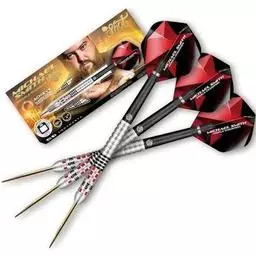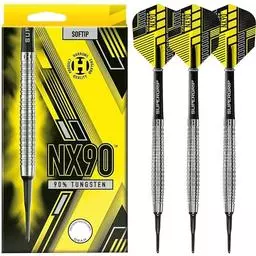Billiards Glossary
|
8-ball: Pool game using all 15 colored balls; each player must pocket all balls before pocketing the black eight ball. 9-ball: Pool game in which players must hit lowest numbered balls first while trying to pocket the nine ball. Ball In hand: Also "cue ball in hand"; the cue ball can be placed anywhere on the table. Bank shot: Shots wherein an object ball hits a cushion before entering a pocket. Billiards: Technically, any game played on a billiards table. Generally considered to mean a carom game. Break: The opening shot of a game. Butt of a cue: The wider, hand-held end of a cue. Carom: To hit two balls with one stroke; a shot in which the cue ball bounces off one ball into another. Call shot: Any game in which during normal play a player must call the ball to be hit and the intended pocket; "8-ball is a call shot game." Center spot: The precise center of the pool table. Combination: Any shot in which the cue ball contacts another ball, which in turn hits one or more balls to an intended place, usually a pocket. Cue: A tapered wooden stick used to hit the cue ball. Cue ball: The white ball struck by the cue (and so used to strike other colored, numbered balls) during play. Cue tip: A material, usually leather, placed on the end of a cue stick that comes in contact with the cue ball. Diamonds: Markings on the table delineating target points and areas of the table. Draw: A type of spin applied to the cue ball by hitting it below its equator, which makes it reverse direction if still on the cue ball at the moment of contact with an object ball. Also called bottom or back spin. Ferrule: The piece at the tip of the cue joining the cue's tip and shaft. House cue: Usually a one-piece cue freely available for use by patrons in bars and pool halls.
|
Implex joint: A soft joint-like plastic or linen base material. It lets the cue whip, putting more English on the cue ball. Irish linen: Linen made from flax and produced in Ireland which is often used to wrap the gripping area of the butt of a cue. Joint: The screw device that allows a two-piece cue to be put together. Jump cue: A pool cue dedicated to jumping balls; usually shorter and lighter than a playing cue and having a wider, hard tip. Also referred to as a jump stick. Jump shot: Any shot where the cue ball is intentionally jumped into the air to clear an obstacle. Jump shots must be performed by hitting the cue ball into the table's surface so that it rebounds from the cloth. Kiss: Contact between balls. Miss: Failure to carry out a shot. Miscue: A stroke in which the cue's tip glances or slips off the cue ball not effectively transferring the intended force. Usually the result is a bungled shot. Object ball: A colored, numbered ball. Pool: "Pocket billiards," or a game in which balls are shot into pockets. Quick release: A joint type which makes it possible to screw and unscrew the butt and shaft very quickly; faster than standard threads. Pool rack: The triangular device, generally plastic, used to group the balls in a pyramid form prior to the beginning of a game. Scratch: The cue ball enters a pocket. Shaft: The thin part of the cue. Sharking: Attempts by one player to intimidate the other during play. Sneaky pete: Any two-piece cue constructed to resemble a house cue. Table in position: Balls remain unmoved after a player's shot. Uni-loc: A joint type in which the butt and shaft screw together in a tight lock, resulting in a better shot with more hitting power. Wrap: Cloth-covered part of the cue near the butt; grip . |


